Arkeologi & Historiebloggen
Arkeologi & Historiebloggen handlar om arkeologi, pågående expeditioner och egna utgrävningar, nya upptäckter, kultur- och religionshistoria, antiken, myter, resor och kuriosa samt tidlös politik. Slutledningar och åsikter i inläggen är författarens egna.
Richard Holmgren är arkeolog med fokus på Mellanöstern, författare, föreläsare, illustratör och guide, är religiöst liberal och partipolitisk agnostiker som driver företaget ARCDOC Arkeologisk Dokumentation. Han är också stolt sambo med Virginia och husse till Milou.
2014 > 06
Days of wonder! I found a lost desert city some months ago - while sitting in my home. If you look at the two pictures above, you can see the original desert photo at the top. Look closely and you will see something hidden beneath the sand. What you see is a hidden city. Underneath the photo I have tried to make sense of the covered structures and created a simple city plan.
I will not tell you where to find the city – you have to find one on your own. Here are some simple guidelines to eventually become a full-fledged armchair archaeologist.

It’s not always easy to take a vacation from field archaeology just because you happen to be at home. And it’s not really necessary. In fact, you don’t even have to be an archaeologist – at least not when it comes to find interesting stuff from the air. Sometimes, when relaxing at home, I use to open Google Earth and establish a search path – just for fun – nothing complicated here. I have found many potential archaeological sites over the years, not only when working in the field, but sitting in my home with a sleeping dog by my side. If you are interested, I can give you some hints on how to find the lost cities, but also how to interpret them.
First let me mention that you can trace city walls everywhere – beneath agricultural areas, forests, under shorelines and so forth. The problem is that you usually get stuck with only one satellite photo in Google Earth and you need to have some luck that the green areas are photographed during the right time of the year or that the water visibility is clear. Usually you need several different angles and use additional infrared photos or thermography to solve this matter. However, the sand in the desert usually stays the same all year around and as the word implies, these areas are vast and deserted. This means that the chances are bigger that you can be the first one to find a specific place of interest.
In short, download Google Earth to your computer and start "flying" by searching any area of interest. The best way to find hidden cities or village structures is to search from an altitude of about 400-1000 meters. In the program, you can see your current altitude in the lower right corner. If you want you can follow a grid, so that you don’t cover any area more than once – but to make things easy – try to begin by searching randomly at places where you can expect to find a city. You can for example carefully study and then follow old trade routes, but never forget that a city needs building material. If the city is made of sundried bricks you need water and clay and if houses are built by stone you need a quarry or nearby boulder stones. In any case, a city always needs water – look for areas with natural springs, rivers, river deltas and even dried up riverbeds. Also check for protecting hilltops, both for surrounding protection and hilltops that could securely elevate a city. If you consider facts such as these, it will help you to narrow downd your search area.
Last but not least – do not give away the position of your newly discovered city. Particularly not over the Internet. The problem with looted archaeological sites cannot be underestimated. Try instead to contact any archaeological institution, so that it can be professionally investigated when time and funding allows. However, sooner or later nobody can protect a site from illicit excavations and looting. Once any excavtions starts, you blow the position. Areas of habitation don’t usually contain easily recovered artefacts, but nearby tombs sometimes do.
What can we learn from the city plan above? If you click HERE, you will be opening a new page where we can try to understand what's hidden under the dunes.
Richard Holmgren, 2014
Ishak Pashas palats är som taget ur en scen i sagosamlingen "Tusen och en natt”. Under varje steg genom byggnaden, skriker väggar, tak och golv av de mest utsökta stenarbeten i barock och rokoko. Palatset ligger längs med Sidenvägen i Östra Turkiet - ett stenkast från gränsen mot Iran. Hela härligheten färdigställdes år 1784 av den kurdiske storvisiren, Ishak Pasha, som för övrigt önskade dricka mjölk direkt från kranen.

Här flödade ingen honung, men nog flödade det mjölk alltid. På en beryktad fontän vid palatsets ingång - eller utgång - beroende på var man är på väg, finns två kranar som emanerar från en nisch i väggen.
Kranarna hämtade en gång i tiden sitt innehåll från palatsets nära och avlägsna omgivningar. Den ena kranen flödade av iskallt vatten från det svala höglandet och den andra flöt ymnigt av färsk mjölk. Om det var får-, get- eller komjölk framgår inte, men det är ingen orimlig sak i sig att herdar i trakten hade som uppgift att varje dag fylla en cistern med mjölk för att behaga boende i palatset eller överväldigade besökare. Jag menar, i palatsets kök fanns även jättelika bassänger som varje dag fylldes med is från omkringliggande glaciärer - sannolikt genom några ottomanska sherpas som sprang skallgång upp och ned för berget Ağrı Dağı. Bassängerna med is var följaktligen palatsets lösning på våra tiders ”kyl & frys”.
Enligt en annan tradition så kunde kvinnor med sinande bröstmjölk få sig en extra boost om de drack av vattnet i fontänen. Kanske en överentusiastisk besökare någon gång missförstod just vattnets stimulerande potential - någon som med halvslutna ögonlock, öronproppar och stora framtänder lyckats föra vidare en för Pasha vansinnig idé om att mjölk skulle ha runnit direkt ur hans kranar? Jag vet inte, men själv föredrar jag faktiskt denna senare version, den med kranar av mjölk - inte rinnande bröstmjölk alltså, men en alternativ animalisk laktosboost som kunde berika livet. Båda varianter levererar ju i slutändan ändå samma resultat - inte sant? Vidare hade nog Ishak Pasha blivit ganska besviken över frågan om vad som kom ur hans vattenkranar på gården - speciellt efter det att "han" huggit fram, mejslat in och pyntat ut, 7600 kvdratmeter sterilt berg.
Illustrationer
Resor
Populärt
Senaste inlägg
- Varför såg pestdoktorernas masker ut som de gjorde?
- Noaks ark - när legend blir arkeologi
- Vingrottans hemligheter
- Det upptäckta hålrummet i pyramiden - vad hände sedan?
- Barnoffer till Molok i Gamla testamentet - vad säger arkeologin?
- "Grottmålningarnas många gåtor" - Res med Forskning & Framsteg
- Vetenskapsradion Historia i Etrurien
- Journalisten Christer Holmgren är Jack the Ripper på spåren.
- Blev den försvunna piloten Amelia Earhart tillfångatagen?
- Petra - en stad hälften så gammal som tiden
- Etruskerna satt på en förmögenhet-men visste de om det?
- Förbundsarken i arkeologiskt ljus
- En härskare med universum i sitt grepp - föreläsning på Medelhavsmuseet
- Har du kanske skor i väggen?
- Fanns det ångmaskiner i antikens Grekland?
- Bronsåldersskatten från Alingsås
- Nya DNA-studier visar det okända ursprunget av mumier i Kina
- Poddgäst i Hjärntillskott med Lydia
- The cruel fate of Tecktor
- Ericsbergs slott
- Ingmar Bergman's The Seventh Seal - filming location
- Dyatlov Pass new theories on Vox
- Hur smakade världens äldsta vin?
- Den heliga lansen - Longinus spjut
- Betalat har vi alltid gjort men vår förhistoria saknar pengar
- Tillbaka till Beirut och Les Caves Du Roy
- När Speldjävulen utmanade Gud - gambling i forntiden?
- Nytt fynd med koppling till bibliska kung David?
- M/S Estonia - en historia full av hål
- Har arkeologer verkligen hittat ett tvåtusen år gammalt batteri?
- Mysteriet vid Djatlovpasset i SVT
- James Bond framflyttad men hur är det med Bondskurken?
- Resa - Pionjärer, Polarexpeditioner & Pyramider
- Inget Polarbröd och skådespel åt folket
- Gregory Areshian
- Rumskullaeken - the oldest oak around
- Dyatlov Pass new theory - chain of events in a nutshell
- På jakt efter det förgångna - webbföreläsning
- En gruvlig historia – Lockerbie, Bernt Carlsson och Dag Hammarskjöld
- Antikt nervgift från papegojfisk?
- Häng med på Stora Historiekryssningen
- Resa till Angkor Wat
- Var demonen i Exorcisten egentligen av godo?
- Olof Palmes sista steg - ny bok av Lars Borgnäs
- Dyatlovpasset i Vetenskapsradion Historia
- Biografen snart en fornlämning?
- Följ med Hannibals elefanter på Medelhavsmuseet
- Julgranen och adventsljusstakens dunkla ursprung
- Bonnier Expeditions till Petra
- Dyatlov pass - film documentary
- Den som söker ska finna - arkeologen som gräver i myter och legender
- Our Dyatlov Pass expedition narrated by Bedtime Stories
- The unopened tomb of China's first emperor
- Expedition Noa i Vetenskapsradion Historia - Del 2
- Expedition Noa i Vetenskapsradion Historia
- Podcasten Oupptäckta Skatter
- Forna matvanor under världens mest kraftfulla neutronkälla
- "Armeniens Stonehenge” - rapport från de senaste utgrävningarna
- Ny podd - Oupptäckta Skatter
- Podcasten Husky - denna gång om arkeologiska expeditioner
- Can’t find what you are looking for on a clean desk?
- Our Dyatlov Pass Expedition 2019 - back in Sweden
- Linköpings första byggnadsverk – en 50 meter lång skeppssättning
- Guds förbundsark - var tog den vägen?
- Den förfärliga och oförklarliga olyckan vid Dyatlovpasset
- Brasiliens Nationalmuseum i lågor - ett miserabelt 200-års jubileum
- Från sanskrit till atlantångare
- Var finns Alexander den stores grav?
- Den plundrande människan
- När kungen kom till Petra...
- Förstummat kulturarv ser på i skräck - Syrien och Irak
- En kväll om äventyr...
- Elefantfoten i Tjernobyl -människosläktets kryptonit
- Biblisk Arkeologi - föreläsningsserie
- Kapokträd - demoner och sex i skogen.
- I Spåren av Hannibals Elefanter -Vetenskapsradion Historia
- Vilka elefanter följde med Hannibal över Alperna?
- Gäddfiske och fotot som idag saknar värde
- Trump och en så kallad Crisis Cult?
- Arkeologi & Konflikter
- Verkligen, titta! Lyssna i vildmarken!
- Gott Nytt År! Decemberhälsningar från en vit jul!
- Etruskiskt vin - ny utställning
- En kväll om egyptomani - mitt i Stockholms hjärta
- En vit fläck på kartan - Taklamakanöknens bronsåldersfolk
- Palmemordet - 30 år
- Skål för 90 år av svensk arkeologi i Italien
- Dags att packa ett vampyrkit...
- Dags för lite självmumifiering?
- CSN:s värsta fiende heter autogiro
- Sanningen bakom levande döda - Zombiepulver
- Så krymptes huvuden
- Fotoåret med iPhone - 2015
- Bar du också rätta tröjan för en helgonförklaring?
- Första propagandafilmen ristades i sten
- Vila i frid - vila i pappkartong
- Flight 19 - olöst mysterium firar 70
- Craters of Verdun? Not quite...
- 28 november - föreläsning om biblisk arkeologi i Vadstena...
- 28 oktober - Etruskerna satt på en förmögenhet – visste de om det?
- Vägen förbi Östgötaslätten och Skänninge?
- Inget sagoslott, men en sagoborg
- Från jägare och samlare till jägare och samlare...
- The summit
- Flyg med Tatevs vingar...
- Betrakta hela Venedig i 3D
- Hade romarna tyckt om glass?
- Varför skrev man getskrift på 3300 meters höjd?
- Ett kulturens 9/11 - regeringens budgetproposition
- Kan arkeologin gräva fram bibliska berättelser? Föreläsning 24 nov.
- Föreläsningsserien "Arkeologen" - på Medelhavsmuseet i höst
- How to discover a lost city from your armchair
- Här rann mjölken direkt ur kranen
- Rethinking smartphones
- Tidskriften Populär Arkeologis resa till Armenien, maj 2014
- Platsen som är helvetet på jorden och där kroppar aldrig ruttnar.
- Klostret som kunde förutse sin undergång
- Araratbergen
- Hatshepsut eller önsketänkande?
- Förnedring och romersk toalettkultur
- När gudarna kunde se sig själva i spegeln
- Lyssna - Vetenskapsradion Historia om Noas Ark
- Stolligt att som arkeolog söka trärester efter Noa på Ararat?
- Förlorad grav under dansgolvet
- Två storkar visar vägen till två berg
- Snön smälter längs gamla Sidenvägen i Kaukasus
- Blev blyförgiftade vattenledningar romarrikets fall? Sanningen gör dig knäsvag!
- In memory of Angelo Bartoli
- Kommande supersoldat dömdes ut redan under antiken
- Dracula löste problemet med tiggeri på allmän plats
- Påvarna mötte döden likt gladiatorer
- Ökänd seriemördare visar vägen till Alexander den Stores grav
- Arkeologi- och resekväll i Lund
- Vill du upptäcka Kung Davids förlorade grav och skattgömma?
- Ugglor med dolda motiv?
- Arkeologi som äventyr
- Varning för hårt väder, pokalfjället
- Burrata - Mozzarellans Armani
- Buddhas käft
- Världens dödligaste träd
- Bakom porten döljer sig...
- Januarimorgon i Rom
- Arkeologer och Karlsons Klister
- Ok, det ska vara rättvist...
- Om Cheops pyramid stod i centrala Stockholm...
- Du minns väl Erich von Däniken?
- Han målade och sålde 15 000 tavlor med samma motiv...
- Världens äldsta vintillverkning - rapport från en unik utgrävning
- När får växte på träd...
- Följ med mig i Noas fotspår!
- Han försnillande statliga medel
- Mumier och saker man förstår...
- Hur var det nu med Indiana Jones?
ARKIV
Länkar
- Populär Historia
- Svenska Institutet i Rom
- Riksantikvarieämbetet
- Världskulturmuseerna
- Medelhavsmuseet
- Stormaktstiden
- Arkeologiforum
- Svenska Rominstitutets Vänner
- Antiquitates
- Arkeologi och antik historia, Uppsala Universitet
- Arkeologibloggar
- Vetenskapsradion Historia P1
- Tidskriften Medusa
- Numismatiska Forskningsgruppen
- Historiska Museet
- Kungliga Myntkabinettet
- Museum Gustavianum
- Upplandsmuseet
- Östergötlands Museum
- Fornvännen
- Svenska Arkeologiska Samfundet
- Svenska Pompejiprojektet
- Fabro - Graphic Design
- Arkeloggen - Arkeologi på Svenska
- Arkeologerna - Statens Historiska Museer
- ISIS - Sveriges Egyptologiska Förening
- The International Interdisciplinary Institute
- Populär Arkeologi
- Arkeologi och byggnadsvård i Östergötland
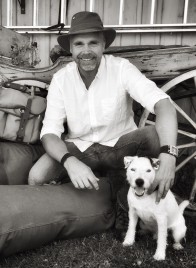

 1 kommentarer
1 kommentarer 



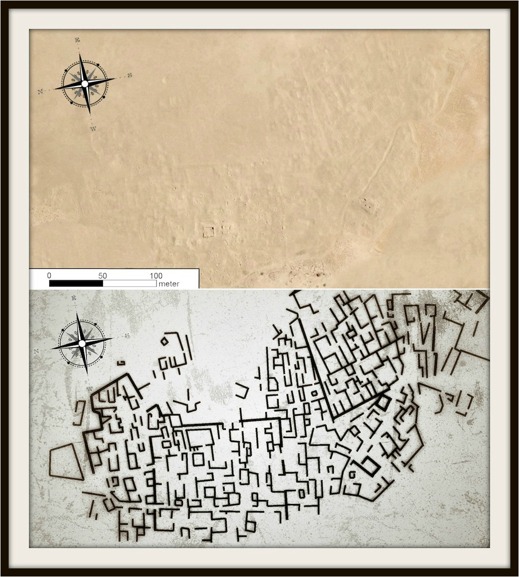
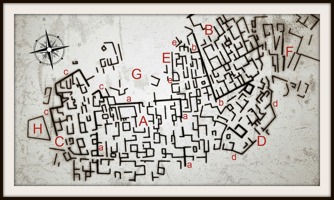
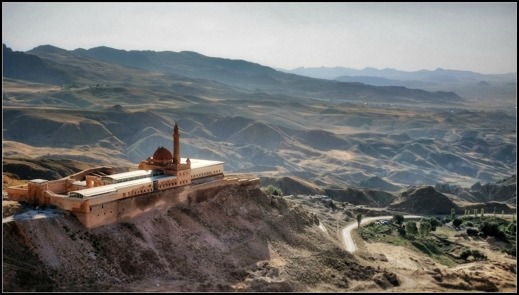
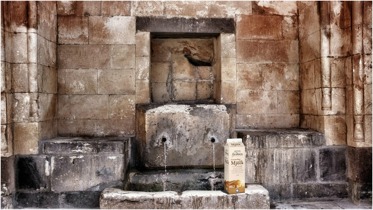

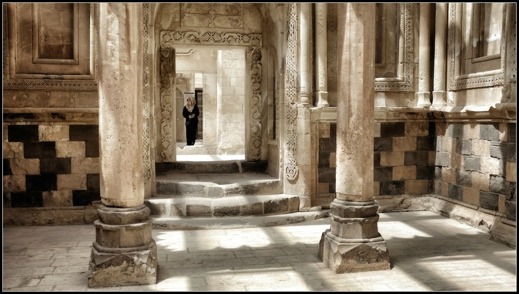

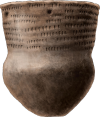


Danilo » Dyatlovpasset i Vetenskapsradion Historia: ”Svara!!!!”
Danilo » Dyatlovpasset i Vetenskapsradion Historia: ”Ny bok mysteriet dyatlovpasset aar 2024???”
Anton Berg » En gruvlig historia – Lockerbie, Bernt Carlsson och Dag Hammarskjöld: ”Hej! Jag vill prata om Bernt Carlsson, jag gör en dokumentär. Har du möjlighet? ..”
fredrik ousbäck » Linköpings första byggnadsverk – en 50 meter lång skeppssättning : ”Gjorde en lite film: https://youtu.be/JvVY6SddYlI //Fredrik Ousbäck”
Anders » Journalisten Christer Holmgren är Jack the Ripper på spåren.: ”Jag har snart själv läst ut boken "Cutting Point" och den är jättebra. Textensto..”